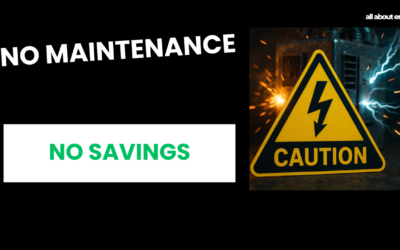Spotting Energy Waste Before It Costs You
Written by Joe Wright
Energy waste is often hidden in plain sight, and if you only scratch the surface, you’ll miss out on significant savings.
Go beyond the basis
Basic energy monitoring tells you what’s happening, but advanced analytics tell you why. The real power comes when you integrate multiple data sources and apply sophisticated analysis techniques.
Data: Start Here
Your energy data is more than just a utility bill it’s a diagnostic tool. When used correctly, it reveals inefficiencies, verifies savings, and helps you make informed decisions. To unlock these insights, you need to follow three key steps:
- Obtain the data – Gather historical and real time energy consumption figures.
- Extract insights – Identify patterns, anomalies, and inefficiencies.
- Take action – Implement changes and measure their impact.
What Does ‘Normal’ Look Like?
Before you can identify waste, you need to establish a baseline. What does normal energy usage look like in your business? Start by examining:
- Daily patterns – When are your peaks? Is energy usage unexpectedly high at certain times?
- Load profiling – Do your energy loads fluctuate predictably, or do you see unexplained spikes?
- Comparison across sites or equipment – If similar buildings or machines consume vastly different amounts of energy, something is wrong.
Industry benchmarks are another useful tool. How does your energy consumption compare to businesses of a similar size and sector? If you’re using significantly more energy than the industry average, there’s room for improvement.
Common Sources of Energy Waste
Once you have a baseline, you can start identifying anomalies that indicate waste. Some common culprits include:
- Phantom loads – Equipment drawing power when not in use.
- Poor power factor – If your power factor is low, you’re paying for apparent power rather than real power—raising costs without increasing useful work.
- Efficiency drift – Equipment can degrade over time. A 10% efficiency drop may not trigger alarms, but it silently increases costs every day.
Verifying Your Energy Savings
A common mistake businesses make is implementing efficiency measures without validating their impact.
Just because your energy bill drops doesn’t mean your changes worked it could be due to seasonal variation or other factors.
To ensure your efforts are making a real difference:
- Normalise your data – Adjust for variables like weather, production output, or occupancy levels.
- Compare before and after performance – Use regression analysis to check if your energy intensity (e.g. kWh per unit of output) has improved.
- Use real time monitoring – Automated systems can detect deviations and alert you immediately.
Continuous Optimisation: Turning Insights into Strategy
Finding waste once isn’t enough. Energy efficiency is an ongoing process. Systems drift over time, operational behaviours change, and new inefficiencies emerge.
To stay ahead:
- Set up alarms and triggers – If equipment exceeds expected energy use, you should be notified immediately.
- Review energy intensity metrics regularly – If your output remains the same but energy use increases, something is becoming inefficient.
- Integrate energy efficiency into procurement and maintenance – Investing in slightly more efficient motors, chillers, or compressors adds up to significant savings over time.
Take Action Before Costs Escalate
Spotting and addressing energy waste isn’t just about reducing costs, it extends the lifespan of your assets, improves compliance, and positions your business for long term sustainability.
Data is your most valuable asset when it comes to energy management but collecting it isn’t enough. You need to analyse it, act on it, and continuously refine your approach. The businesses that succeed in energy management don’t just react to waste they prevent it before it happens.
Are you looking to improve your organisations energy management practices?
Take our Energy Management Scorecard quiz to assess your current strategies and identify areas for improvement. Click below for the free assessment

You May Also Like…
Compliance Simplified
If you’re part of any of the mandatory compliance scheme like SECR, ESOS, or the many others out there, then you...
Why maintenance matters for energy management
When you think about improving your energy management, where does your mind go first? Upgrades? New systems? Cutting...
Creating A Culture Of Energy Efficiency
If your business is subject to compliance schemes like ESOS or SECR, you’re not alone. A lot of the companies I work...




